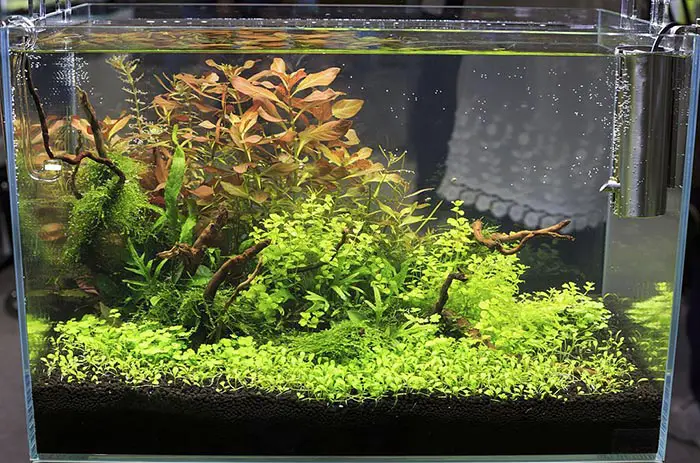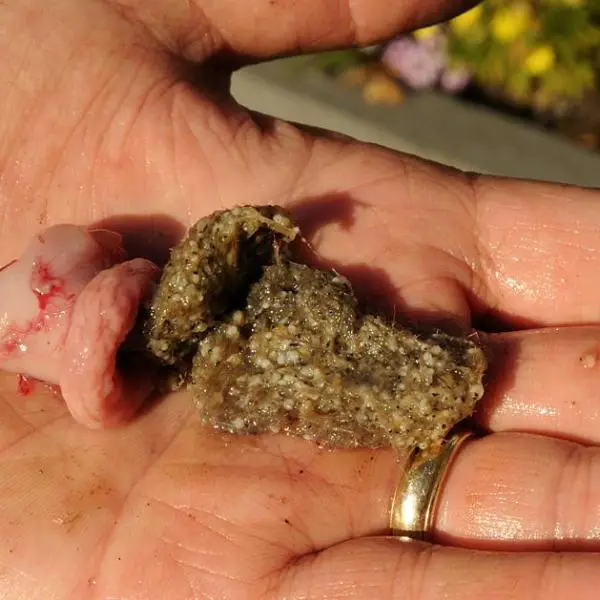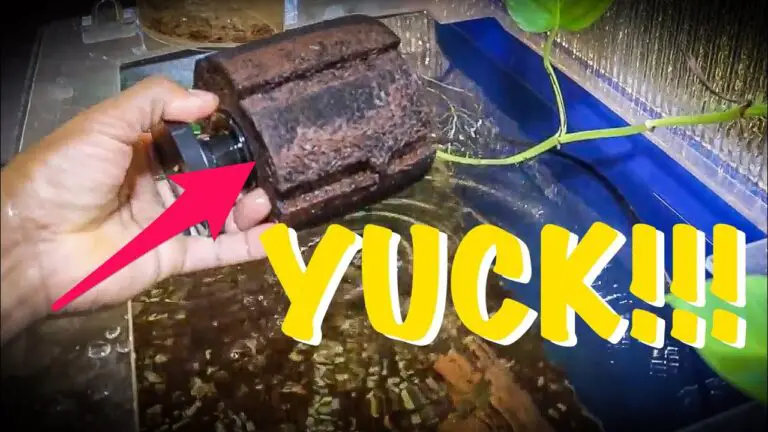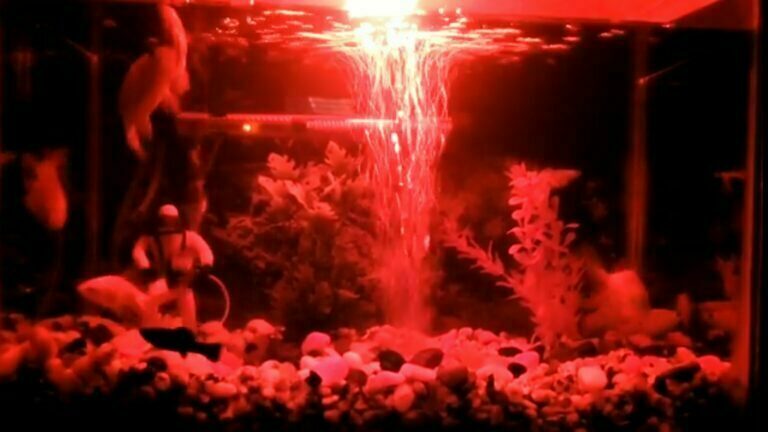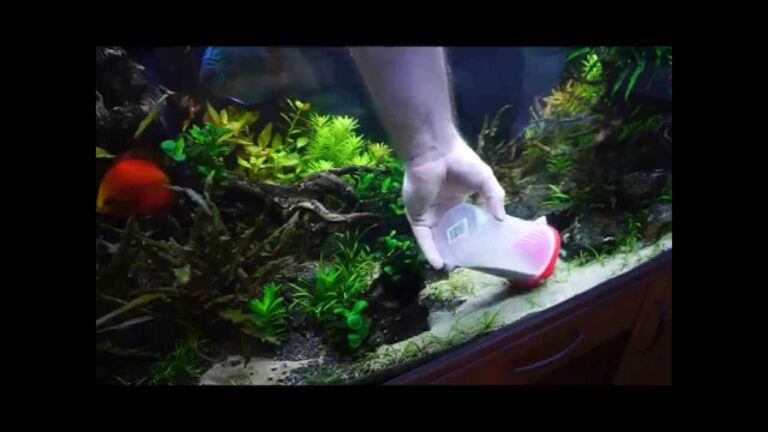How to Clean Plastic Aquarium Plants?
1. Begin by removing the plastic aquarium plants from your tank and rinsing them off with room temperature tap water.
2. Fill a bucket or sink with warm to hot water (not boiling) and add an aquarium-safe cleaning solution such as fish tank safe chlorine bleach, hydrogen peroxide or vinegar Stir until dissolved.
3. Place each plant into the cleaning solution for 10 minutes, stirring occasionally to ensure all surfaces are exposed to the solution for maximum effect.
4. Rinse each plant under running tap water until it runs clear of any trace of bleach, hydrogen peroxide or vinegar from the previous step before returning it back to its original habitat in your tank.
5. To avoid shock to your fish always rinse any remaining residue off of the plants again in room temperature tap water prior to reintroducing these into their home environment within your aquarium setup.
- Gather the Supplies: Before you can begin cleaning your aquarium plants, gather all of the necessary supplies. You will need a bucket or sink to rinse them off in, a soft-bristled brush and some mild soap, such as dish detergent.
- Rinse Off Plants: Place the plastic plants into the bucket or sink and rinse them with room temperature water until they are free from any dirt or debris that has built up on their surfaces. Make sure to use only your hands for this step, as using brushes at this stage may damage delicate parts of the plant design.
- Brush Away Debris: Once rinsing is complete, take out a few plants at a time and begin scrubbing them gently with your brush and mild soap mixture until all. Debris has been removed from each leaf and stem surface of the plant designs. Be sure not to be too rough when doing this so as not to cause any damages to the plastic leaves or stems of each plant design.
- Rinse Again: After brushing away debris from each individual plant design, place all cleaned aquarium plants back into either your bucket or sink filled with room temperature water and rinse off completely one more time before removing it from its bathtub area. This serves two purposes; firstly it removes any leftover traces of soil that may have remained after brushing away dirt particles and secondly it washes away any residual soap used during cleaning process leaving behind clean plastic aquarium plants ready for placement inside an aquatic environment once again!
Cleaning Plastic Aquarium Plants With Vinegar
Cleaning plastic aquarium plants with vinegar is a great way to keep your tank looking its best. Vinegar is a natural disinfectant, so it can help kill any bacteria or algae that may be lingering on the surface of the plants. Additionally, vinegar won’t harm fish or other living creatures in the tank if used properly and dilutions are kept low.
To clean your plastic aquarium plants with vinegar you’ll need to mix one part white distilled vinegar with four parts water in a bucket. Then submerge the plant for about 15 minutes before rinsing off with fresh water and re-inserting into the tank.
Cleaning Plastic Aquarium Plants Dishwasher
Cleaning plastic aquarium plants in the dishwasher can be an effective way to remove dirt and debris, as well as any salt or mineral residue. It is important to place the plants on a top rack to avoid damage and set the temperature on low for a gentle yet thorough clean. Be sure that your chosen detergent does not contain bleach, which could harm both you and your aquatic friends!
Additionally, it’s best if you run the load without any dishes present so that there are no adverse reactions between materials.
Cleaning Aquarium Plants With Hydrogen Peroxide
Cleaning aquarium plants with hydrogen peroxide is an effective way to remove algae, bacteria and other contaminants from your aquatic vegetation. Hydrogen peroxide breaks down into oxygen and water when it comes in contact with the plant material, killing any unwanted organisms in the process. It is important to use a diluted solution of hydrogen peroxide when cleaning aquarium plants as too strong of a concentration can damage or even kill them.
Additionally, make sure that you rinse away all remnants of the cleaner once you are finished so your fish don’t accidentally consume any harmful toxins.
How to Clean Algae from Plastic Aquarium Plants?
Cleaning algae from plastic aquarium plants is an essential maintenance task for maintaining a healthy aquatic environment. To do this, you can use a soft-bristled brush to gently scrub the affected areas of your plants. After brushing off any visible algae, be sure to rinse your plant in warm water and then soak it in a 10% bleach solution for at least 15 minutes before rinsing again with clean water and allowing it to dry completely before returning it back into the tank.
How to Clean Algae off Plastic Aquarium?
To clean algae off of plastic aquariums, first remove all the decorations and rinse them in a mixture of water and vinegar. After this, scrub the affected areas with a soft bristled brush to loosen any remaining debris. Then use an algae cleaning solution specifically designed for aquariums to further break down tough stains and buildup.
Once you’re done cleaning, be sure to rinse your aquarium thoroughly before replacing any decorations or fish back into it.
How to Clean Live Plants before Putting in Aquarium?
Before introducing any live plants into your aquarium, it is important to clean them before putting them in the water. This can be done by first removing all of the soil from around their roots and then soaking them in a mild chlorine solution for 15 minutes. After that rinse off with dechlorinated water and allow to air dry completely before adding them to your tank.
Doing this will help ensure that no unwanted pests or diseases are being introduced into your aquarium environment.
How to Clean Aquarium Plants Without Bleach?
If you’re looking for a way to clean your aquarium plants without using bleach, there are several natural alternatives that can be used. Boiling water is an effective option as it will kill any bacteria or algae on the leaves of the plant and make them look fresh again. You can also use vinegar to wipe down the plants, which will do an even better job at removing any unwanted debris.
Finally, hydrogen peroxide is another great natural cleaning agent that will help keep your aquarium plants in top condition without resorting to harsh chemicals like bleach.
How to Clean Aquarium Plants of Snails?
If you’re noticing an influx of snails in your aquarium, one of the best ways to remove them is by cleaning your plants. To do this, first remove any visible snails from the tank and then take out the plants. Once outside of the tank, use a small brush or cloth to scrub off any remaining snails on the leaves and stems.
Afterwards, rinse off with clean water and return them back into your aquarium.

Credit: aquariume.com
Should I Clean the Plastic Plants in My Aquarium?
If you have plastic plants in your aquarium, it is important to clean them periodically. Cleaning helps to ensure that the plants look their best and remain free of algae and other undesirable buildup. It also helps to keep water quality at optimal levels by preventing organic material from building up on the surface of the plant leaves or stems.
To properly clean plastic aquarium plants, first take out all of the fish, snails, shrimps etc living in your tank before beginning. Secondly use a soft brush such as an old toothbrush or sponge to remove any debris from the plant’s surfaces and rinse off with warm water (never hot). Thirdly if there are still some stubborn areas of grime left on your plant’s leaves you may use a gentle detergent like baking soda mixed with warm water for extra cleaning power; just make sure not to leave any residue behind after rinsing off everything thoroughly!
Finally replace back into its natural environment once it has been cleaned and dried completely making sure no chemicals were used during this process. Doing this will help maintain healthier conditions for both fish inhabitants and aquarium vegetation alike – so don’t forget about it!
How Do You Clean Plastic Aquarium Decorations?
Cleaning plastic aquarium decorations is an important part of maintaining a healthy and attractive environment for your fish. It’s very easy to do, but it must be done regularly to ensure that no harmful bacteria or algae can build up on the decoration surfaces. To start, you should remove any greenery from the plastic decorations and discard it in the trash.
Next, wash all of your plastic decorations with warm water and a mild detergent using a sponge or soft cloth – make sure not to use any abrasive materials as these can damage the surface of the decoration. Once cleaned, rinse off all soap residue before returning them back into your tank; any leftover soap will cause harm to your aquarium life! Finally, if needed you may need to use an aquarium-safe cleaner such as vinegar or baking soda mixed with water to help break down tougher stains left by algae or calcium deposits caused by hard tap water.
Be sure to follow manufacturer instructions when using these products!
How Often Do You Clean Plastic Aquarium Plants?
When it comes to cleaning plastic aquarium plants, a regular routine is key. Generally speaking, you should clean them at least once every two weeks, or more often if algae starts to build up. First, remove the plastic plants from the tank and rinse them off with warm water.
Then use an aquarium-safe brush (or your hands) to gently scrub away any dirt or debris that may have gathered on the surface of the plant. Afterward, submerge each plant in a mixture of bleach and water for about 10 minutes before rinsing again with fresh water. Finally, let them air dry completely before returning them back into your aquarium.
By following this simple yet effective cleaning routine for your plastic aquarium plants regularly, you can ensure they stay looking their best and continue to provide both decoration and shelter for all of your aquatic inhabitants!
How Do You Clean Dirty Aquarium Plants?
Cleaning dirty aquarium plants can be a daunting task, but it is important to keep your aquarium environment healthy and clean. The first step in cleaning dirty aquarium plants is to remove them from the tank and rinse them off with cool water. This will help loosen any algae or dirt that may be present on the plant’s leaves.
After rinsing, use a soft sponge or brush to gently scrub away any remaining dirt or algae. If needed, you can also prepare a solution of one part bleach and 10 parts water; dip the affected areas into this solution for two minutes before rinsing thoroughly with cool water again. Afterward, place the cleaned aquarium plants back in their original location within the tank and monitor closely for further signs of debris buildup or disease.
Regularly checking your aquatic plants for signs of sickness or decay is key to keeping your fish happy and healthy!
How To Clean Plastic Aquarium Plants and Ornaments without scrubbing, Ultrasonic Cleaners get it ALL
Conclusion
By following the tips outlined in this blog post, you will be able to ensure that your plastic aquarium plants remain clean and aesthetically pleasing. Cleaning plastic aquarium plants can be a time-consuming process, but it is essential for maintaining healthy water conditions in your tank. Taking the time to regularly clean your artificial plants is worth it as they will add color and life to your aquatic habitat for many years to come.
With the right cleaning materials and technique, you’ll have beautiful looking plastic plants that help keep your tank’s inhabitants happy and safe!
